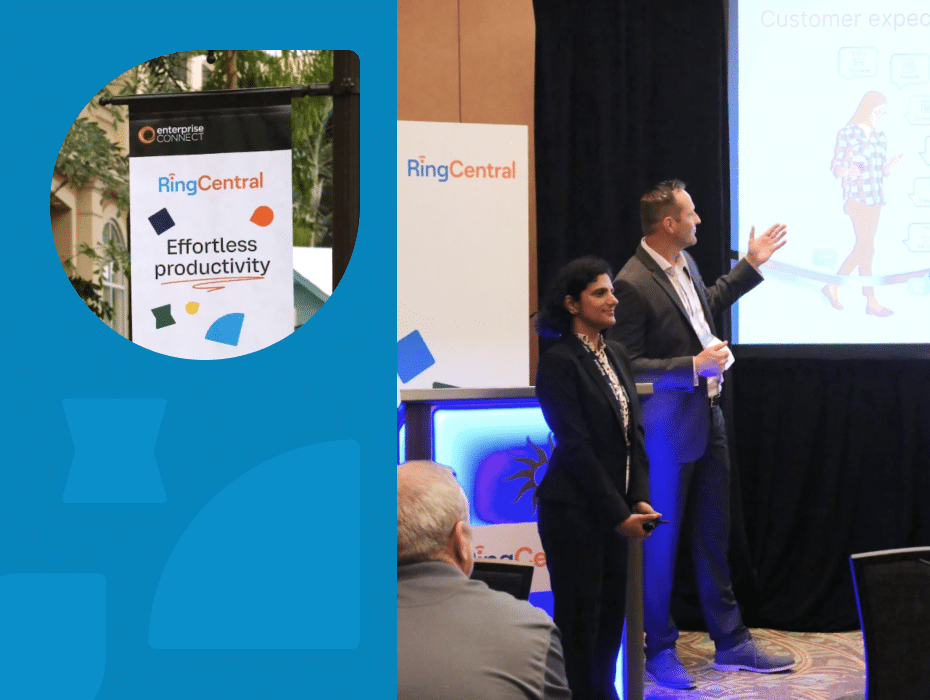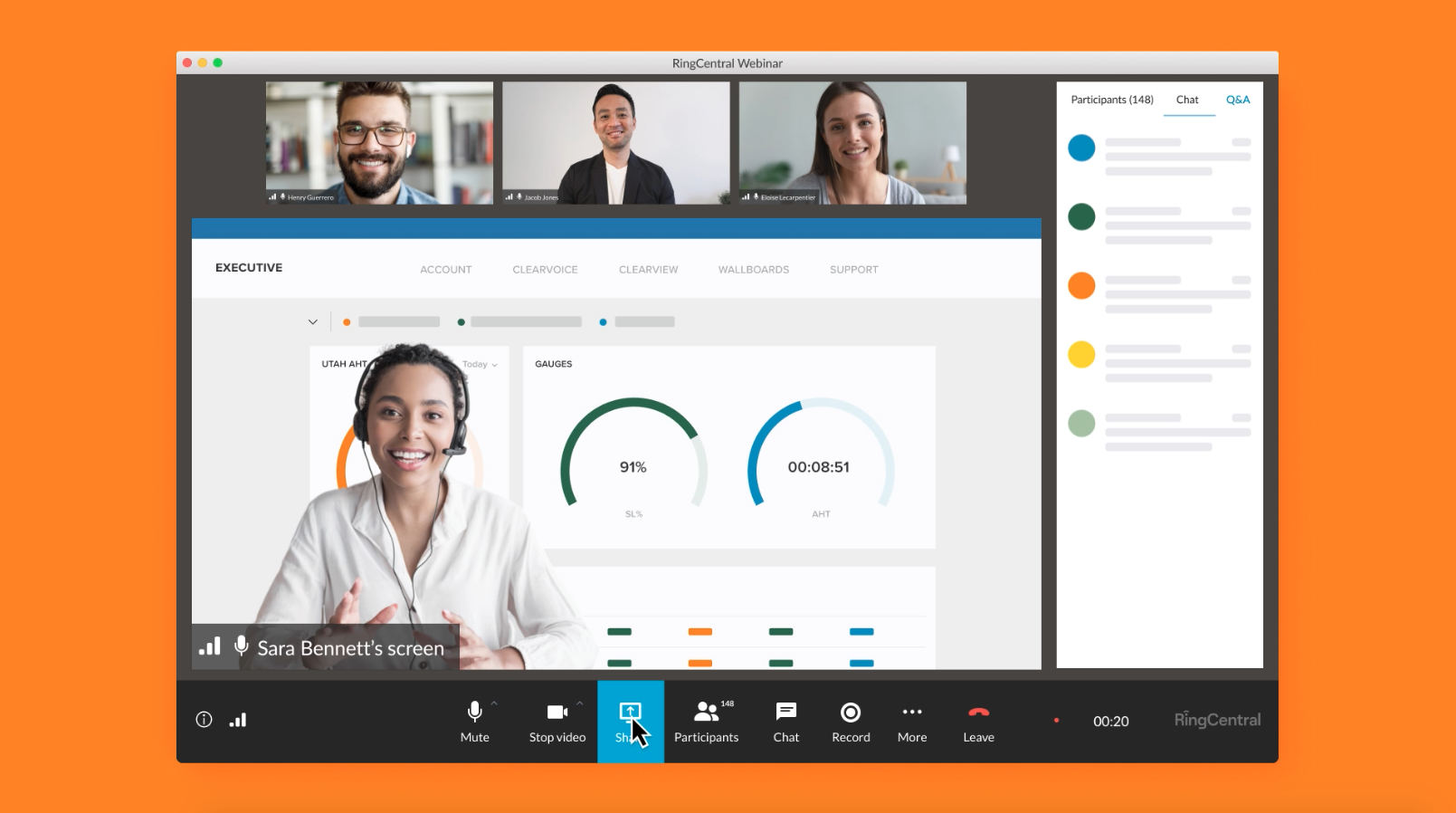Highlights:
- Keeping customers occupied and offering self-service options can make contact center call wait times feel shorter.
- Providing customers with various communication channels can both improve customer satisfaction and streamline contact center operations.
- Digital and cloud-based technology can be used to implement strategies to prevent call abandonment.
The last thing a business wants is to leave customers feeling unsatisfied and discontent. That’s precisely what can happen when a customer calls into a contact center, only to be left on hold for what feels like forever. In many cases, long hold times lead directly to call abandonment.
If your contact center is seeing an increase in call abandonment rates, it is time to take steps to prevent these dropped calls from happening. Fortunately, there are several tactics that contact centers can adopt to avoid call abandonment.
1. Inform customers of estimated wait times
Giving customers the heads up about how long they can expect to wait on a call will prepare them for their time in the queue. There’s an element of psychology that applies here: unexplained waits can be perceived as longer than explained waits.
Considering this, it’s helpful to announce the estimated wait time right at the beginning of a call. Contact centers can implement interactive voice response (IVR) technology to automatically gauge the queue and play a recorded message of the estimated wait time. The customer can then make their own decision about whether the wait time is acceptable, or whether they should hang up and call back at another time.
2. Offer virtual queues
Virtual queues allow customers to maintain their place in line, hang up, and receive a call back from a customer representative at a specific time. This allows customers to avoid sitting on the phone waiting for their call to be taken. Instead, they can go about their day and receive a call within the approximate call-back window.
Call-backs are particularly useful during peak times when telephone wait times tend to be at their highest. Customers can also choose to receive alerts via text or social media messenger on their mobile devices. This way, customers can be notified when an agent is available to take their call. This adds to the convenience level and enhances customer experience.
3. Incorporate omnichannel routing
While telephone communications are key to contact center-customer communications, technology has opened the doors to other communication channels that customers can use.
Omnichannel routing allows contact centers to handle multiple customer communications at once, thereby reducing wait times. This technology is also capable of determining agent capacity and assigning interactions to the appropriate type of channel, including text messages, social media messages, chat, and email.
Contact centers that support multiple channels of communication can not only improve customer satisfaction, but can also minimize queue wait times by spreading the interactions over various platforms.
4. Provide self-service options
Self-service channels are becoming very popular in contact centers, as an increasing number of customers prefer this method of communication. For instance, customers can track a package by inputting a tracking number on an online portal or make a payment via an automated system.
Self-service options can free up a lot of time that would otherwise be spent waiting for a live agent to become available. Not only does this shorten and even eliminate wait times entirely, but it also helps to cut costs for contact centers by reducing the need for extra agents.
5. Assign overflow teams
Overflow teams or contact centers can take over calls that are in queue for longer than a specific threshold. Contact centers can establish a specific wait time that is deemed long enough for customers to stay on hold. Once this threshold is reached, customers can be directed to an overflow team dedicated to taking calls that have gone over this predetermined wait time.
With this approach, customer calls can be diverted as needed during peak times. It should be noted, however, that this strategy will require appropriate staff levels to accommodate these overflow calls.
6. Have customers complete tasks while waiting
Giving customers something to do while they’re waiting to speak to a live agent will help make the time pass more quickly. For instance, customers can be prompted to gather all the pertinent information needed for the call while in queue, such as account numbers or information to confirm their identity. At the same time, all this prepping before being connected to an agent will help streamline the call.
Chatbots can also be used for this purpose. Custom forms can be created for chatbox communications for customers to complete as they continue to hold for the next available agent.
7. Redial abandoned calls during slower times
Undoubtedly, some callers might simply hang up the phone after becoming too impatient with the wait time, especially with no notification about how much longer the wait time will be. In the case of abandoned calls, contact centers might want to redial them as quickly as possible by appointing a specific team of agents. This might be more feasible during off-peak times of the day when agents have more time to target this particular task.
Redialing abandoned calls in this way will help customers feel important while ensuring that agents are not bombarded with calls.
Many of the tactics employed to prevent contact center call abandonment depend on specialized technology, including cloud-based phone systems and artificial intelligence. RingCentral provides contact centers with state-of-the-art cloud-based technology that promotes better agent-customer communications. In turn, this boosts customer satisfaction while streamlining the contact center environment.
Our all-in-one cloud communications platform blends cloud technology with telephone, team messaging, and video conferencing. Contact us today to request your free demo.
Originally published Mar 29, 2022, updated Jun 20, 2024





